Pawscessories is reader-supported. When you buy via links on our site, we may earn an affiliate commission at no cost to you.
Learn more.
Are you thinking about adding a blue heeler corgi mix to your family? or perhaps you are just curious what this dog would be like.
The blue heeler corgi mix is known by many names, including the cowboy corgi, blue heeler corgi, and the corgi cattle dog.
This adorable dog is a cross between an Australian cattle dog (blue heeler) and a Pembroke welsh corgi, and it’s becoming increasingly popular, and for a good reason!
You might be wondering, what would this corgi cattle dog be like?
As with most crossbreeds, this can be a little unpredictable. These dog breeds could take on more characteristics of one parent or the other.
This article will cover everything you need to know about the blue heeler corgi mix.
This includes its history, what it was bred for, physical appearance, size, colors, temperament, and other frequently asked questions about this mixed dog breed.
So without further ado, let’s dive in.
Table of Contents

What Is A Blue Heeler Corgi Mix?
The blue heeler corgi mix is a “designer dog” created by crossing an Australian cattle dog (blue heeler) with a Pembroke welsh corgi.
Since the blue heeler corgi mix is crossbred, it’s not recognized by the American Kennel Club (AKC).
The blue heeler corgi is sometimes called the corgi cattle dog or cowboy corgi.
History Of The Blue Heeler Corgi
To better understand the blue heeler corgi, we first need to examine the history of both parent breeds.
Australian Cattle Dogs
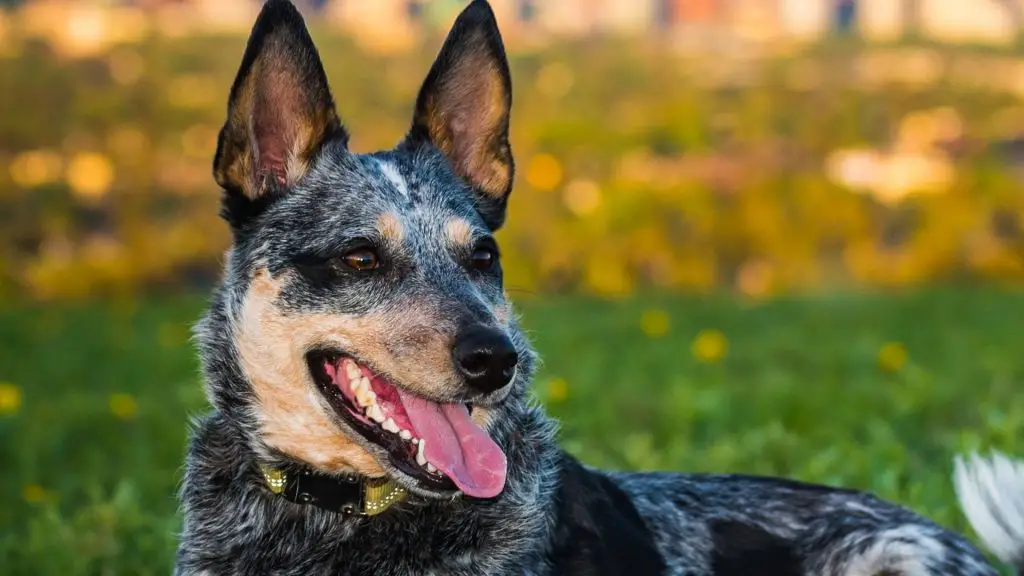
The blue heeler, also known as an Australian Cattle Dog or Australian Queensland heeler, was originally bred in Australia in the 1800s and used for herding cattle.
Blue heeler dogs are intelligent, active, and loyal pets.
They are easy to train but may require more exercise than some other breeds.
Blue heelers are often used as working dogs on farms or ranches due to their herding instinct.
However, they can also make excellent family pets.
Blue heelers are typically very friendly with children and other animals.
They are also very protective of their families, making them good watchdogs.
Pembroke Welsh Corgi
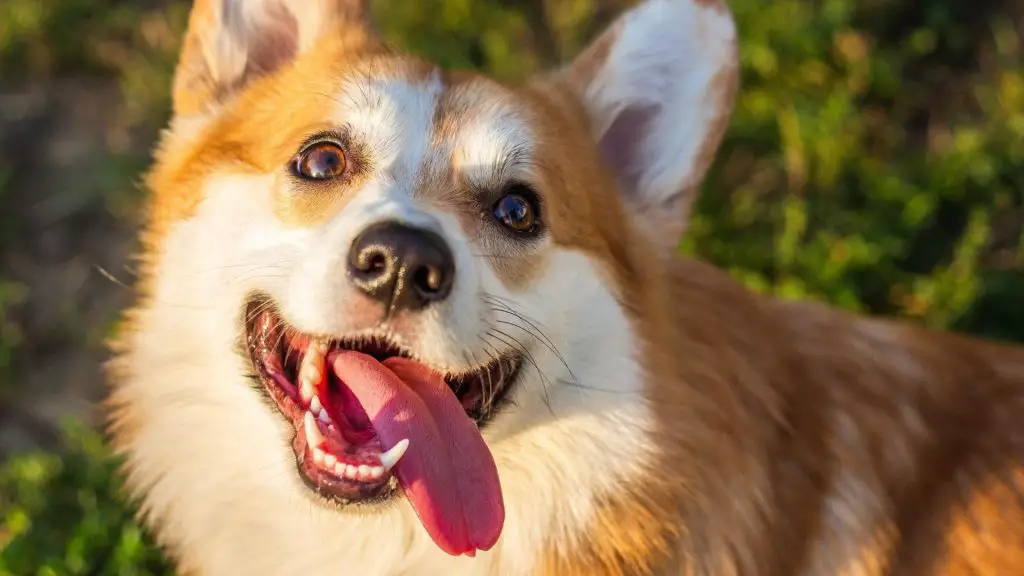
On the other hand, we have the Pembroke Welsh Corgi, which was thought to have originated in Wales and bred as herding dogs on farms.
Their lineage dates back to 1107 AD, making them one of the oldest breeds in Great Britain.
There are two types of corgis, the Pembroke Welsh Corgi and the Cardigan Welsh Corgi.
Both share almost identical physical characteristics, but the Pembroke is slightly smaller and has a different coat coloration.
These charming little dogs are incredibly friendly, and they love nothing more than spending time with their human companions.
Corgis are also very easy to train and quickly learn new tricks and commands.
Despite their small size, Corgis are surprisingly rugged and energetic.
These lovable pups are always eager to snuggle up close, making them the perfect bedtime buddies.
Now that we understand the parents better, we can dive into the specifics about the cowboy corgi and what you can expect from this hybrid dog breed.
What Was The Cowboy Corgi Bred For?
The corgi cattle dogs were bred as a companion dog and herding dog.
Since both its parent breeds have a strong herding instinct, it’s not surprising that the blue heeler corgi would inherit this trait.
These pups are brilliant and trainable, which makes them excellent working dogs on farms or ranches.
However, they are also becoming increasingly popular as family pets.
This is likely due to their friendly and loving nature.
What’s The Corgi Cattle Dog Like?
If you look at the parent breeds, you can see a lot of overlap between the two.
The areas you find a lot of overlap are what shines through in the blue heeler corgi mix.
The blue heeler mix is friendly, loving, and makes a great family dog.
They are also easy to please, adaptable, and intelligent.
Let’s break down each of their unique characteristics and physical appearances.
Cowboy Corgi Dog Appearance & Build
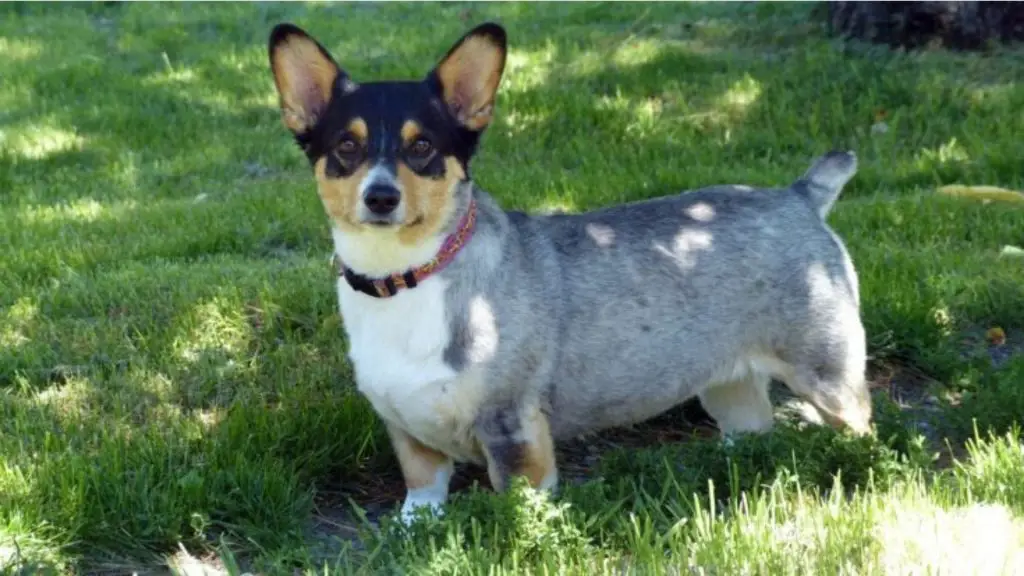
The blue heeler corgi is a small to medium-sized dog.
These dogs are relatively compact and have short legs, similar to the Welsh Corgi.
However, they tend to be slightly larger than a Corgi, with a more muscular build.
They can be a variety of colors taken from both parent breeds.
Although not as common, some cowboy corgis may even be half cardigan welsh corgi and half blue heeler.
This would change up the variability in their coat color and appearance.
Overall, it’s tough to say exactly what a blue heeler corgi mix will look like.
The best way to get an idea is by looking at pictures of the parent breeds and then imagining something in between the two.
Cowboy Corgi Size (Weight & Height)
Blue heeler corgis are a bit larger than your standard Welsh Corgi.
The average cowboy corgi weighs between 30 and 50 pounds and stands anywhere from 14 to 20 inches tall at the shoulder.
However, some blue heeler corgis may be on the smaller or larger side of this range, depending on which parent breed they take after more.
Female cowboy corgis are usually on the smaller side, while males tend to be larger.
Cowboy Corgi Coat Colors & Texture
The cowboy corgi can be a variety of colors found in its parent breeds.
Blue heelers have a bluish color coat with mottled or speckled patterns. They can even have some tan or rust coloring.
On the other hand, Pembroke Corgis can be red, red-headed tri-color, black-headed tri-color, or sable. The Cardigan corgi can be black, blue merle, brindle, red, and sable.
So with all these colors in the gene pool, a cowboy color could be any combination.
The best way to tell is to look at the parents to determine the color coat a blue heeler corgi mix puppy may have.
When it comes to texture, blue heeler corgis usually have a short and dense double coat. This means they will have an undercoat, as well as a top coat.
The undercoat is usually soft, while the outer coat is a bit harsher.
This coat protects them from extreme weather conditions and helps insulate their body heat.
Shedding & Grooming Care

Bother the Australian cattle dog and the corgi shed twice a year.
So do cowboy corgis shed?
Yes, blue heeler corgis are relatively heavy shedders.
They will likely have two major shedding periods each year, typically in the spring and fall.
During these times, you may find yourself doing a bit more vacuuming than usual to keep up with all the hair.
Fortunately, blue heeler corgis only need to be brushed once or twice a week for the rest of the year.
This will help remove any loose hair and prevent mats and tangles from forming.
When it comes to grooming, blue heeler corgis are pretty low maintenance.
They only need to be bathed every few months unless they get particularly dirty or develop an odor.
However, they can be susceptible to wax buildup in their ears, so it’s important to check and clean their ears regularly.
Their nails should be trimmed every few weeks, and their teeth should be brushed regularly.
Overall, blue heeler corgis are relatively easy to care for.
Our Blue Heeler Corgi Mixes Hypoallergenic?
No, blue heeler corgis are not hypoallergenic.
While they don’t shed as much as some other dog breeds, they still shed enough to trigger allergies in people sensitive to dog dander and hair.
Ears & Tail
Blue heelers and corgis have ears that stand erect and are pointed at the tips.
Cowboy corgis usually have similar ears that are stand-up.
A cowboy corgis ears can take up to six months to stand up.
The corgi has a long, full tail, but they are usually docked when they are a puppy due to breed standards. Blue heelers, on the other hand, have a long tail.
So a blue heeler corgi mix can either have a long tail or a bobbed tail, depending on their parents and the breeder.
Eye Color
Corgis and blue heelers can have a variety of different colored eyes.
The most common eye color for blue heelers is blue or blue-gray.
However, they can also have one blue eye and one brown eye, known as heterochromia.
Corgis can have blue, brown, amber, or hazel eyes.
So a cowboy corgi can have blue, brown, amber, hazel, blue-gray, or two eyes with different colors.
Lifespan
The cowboy corgi lives 12 to 15 years on average.
This is similar to both parent breeds that live 12 to 15 years.
Common Health Issues
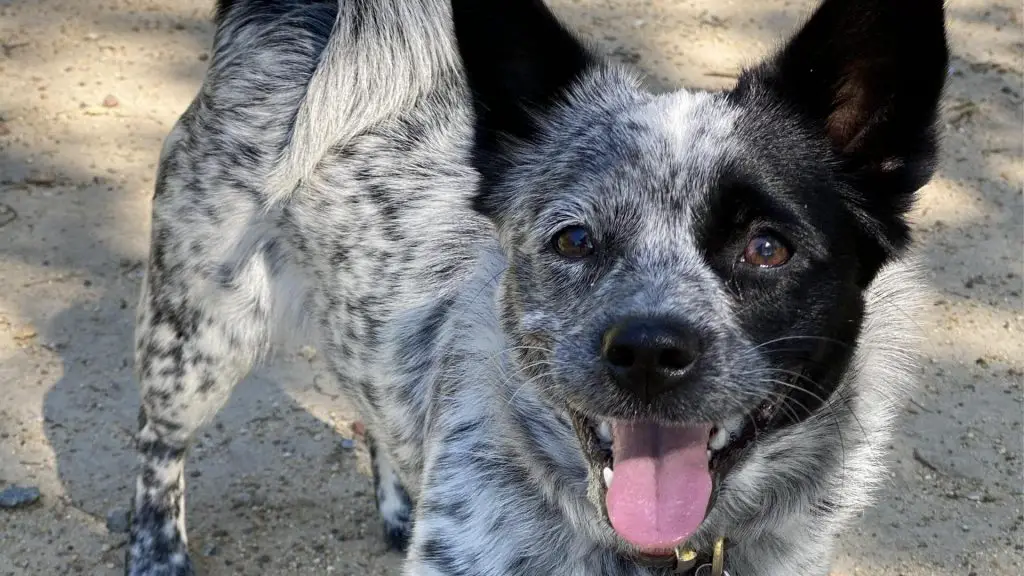
The blue heeler corgi mix is a hybrid dog, so they can inherit health problems from either parent breed.
However, they are generally a healthy breed with few health issues.
Some of the most common health problems that blue heeler corgis can suffer from include:
- Heart conditions
- Eye defects
- Deafness
- Orthopedic issues (like hip dysplasia)
- Epilepsy
- Degenerative myelopathy
- Intervertebral disc disease
Trainability & Intelligence
Cowboy Corgis are very intelligent and trainable.
They inherit this from both their blue heeler and corgi parents.
This breed is easy to train, and they learn new tricks quickly.
However, they may need more exercise and stimulation than other breeds since they are so active.
They have natural herding instincts, so training may be difficult for some.
The best way to train a blue heeler corgi is with positive reinforcement methods like treats and praise.
Further Readings: 9 Simple Steps To Create The Obedient Dog Of Your Dreams
Activity Level & Exercise Needs
The blue heeler corgi mix is a moderate to high-energy dog.
They need at least 60 minutes of exercise per day.
This can be a walk, run, visit to the dog park, hike, or even play fetch in the backyard.
Even after a walk, they may need extra training and playtime to burn off all their energy.
If they don’t get enough exercise, they may become destructive or anxious.
Herding instincts may also come out if they are not exercised enough.
So it’s important to give them plenty of stimulating toys and puzzles to keep their minds occupied.
Temperament & Behavior
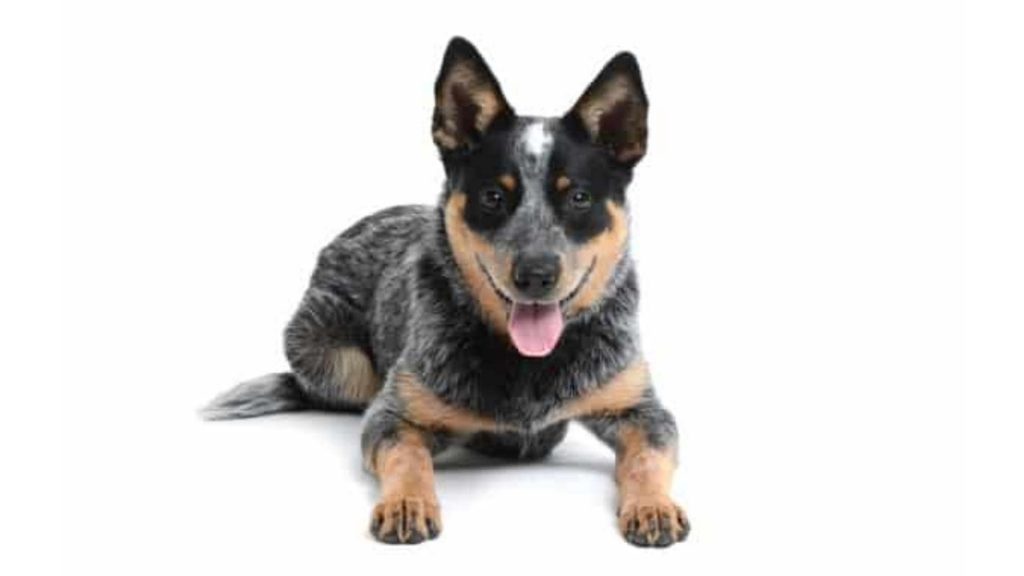
Pet owners will love the blue heeler corgi mix’s friendly and affectionate temperament.
This breed is known for being loyal, devoted, and loving.
They make great family dogs and get along well with children.
However, they may try to herd smaller children or animals since they were originally bred to do that.
Blue heeler corgis mixes are also known for being protective of their family and home.
They make great watchdogs and will bark to alert you of any strangers or potential threats.
This breed is also brilliant and easy to train.
They can get along well with other dogs and animals with proper socialization.
Do Cowboy Corgis Bark A Lot?
No, cowboy corgis do not bark a lot.
They are actually relatively quiet dogs.
However, they bark when they feel it is necessary, such as when trying to protect their family or home.
Do Cowboy Corgis Like To Cuddle?
Yes, cowboy corgis do like to cuddle.
They are known for being affectionate and loving dogs.
They often try to snuggle up with their family members on the couch or in bed.
Are Cowboy Corgis Good With Kids?
Yes, cowboy corgis are good with kids.
They are known for being gentle, loving, and patient with children.
However, they may try to herd smaller children or animals since they were originally bred to do that.
With proper training and socialization, this behavior can be prevented.
Are Cowboy Corgis Good With Other Dogs?

Yes, cowboy corgis are good with other dogs.
With proper socialization, they can get along well with other dogs and animals.
Are Cowboy Corgis Good With Strangers?
With proper socialization, cowboy corgis can be good with strangers.
However, they are known for being protective of their family and home.
Their parent breeds were bred for herding and protecting territory.
Dogs that would be naturally friendly to strangers would not have been successful in these jobs.
So, it is important to socialize them from a young age to be comfortable around people outside their family.
Are Cowboy Corgis Good Apartment Dogs?
Corgis will do well in apartments, but blue heelers do not.
So, cowboy corgis will likely fall in the middle.
They might not be the best apartment dogs if they take after their blue heeler parent.
On the flip side, if they take more after their corgi parent, they will likely do just fine in an apartment.
So long as you can their exercise and stimulation needs, they will likely be happy in any size home.
What Is The Price Of A Blue Heeler Corgi Mix?

The average price for a blue heeler corgi mix (cowboy corgi) is roughly $1200 – $1500.
This will vary depending on the breeder, location, and demand.
Do your research before buying a cowboy corgi and ensure you are getting a healthy dog from a reputable breeder.
Be very careful when you see low prices.
Where Can You Buy A Blue Heeler Corgi Mix?
Dog breeds like the blue heeler corgi mix (cowboy corgi) can be challenging to find.
Your best bet is to purchase from a reputable online or local breeder.
Here are a couple options (just make sure to do your own research before buying):
I recommend against purchasing from a pet store as you cannot be sure of the dog’s quality or where it came from.
Local breeders may have blue heeler corgi puppies for sale, but they may not always have them, so you may have to wait for a litter to be born.
Where you live will also affect what breeders are available to you.
American Corgi Vs Cowboy Corgi: What’s The Difference?
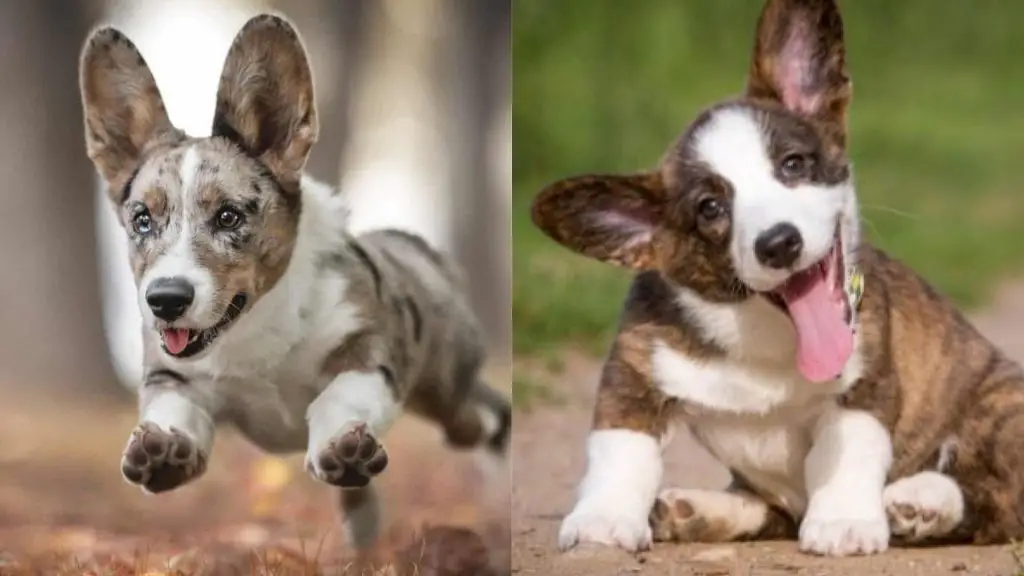
There are several Corgi dog breeds, each with a unique mix of traits, appearance, and history.
The American Corgis is a mix of the Pembroke Welsh Corgi and the Cardigan Welsh Corgi. At the same time, the Cowboy Corgi is a mix of the blue heeler and the Pembroke Welsh Corgi.
So, the American corgi is all corgi, while the cowboy corgi contains Australian cattle dog genetics.
So let’s compare the differences based on size, appearance, temperament, and lifespan.
American Corgi Vs Cowboy Corgi: Size
The American corgi is 10-12 inches tall and weighs 25-30 pounds. The cowboy corgi is slightly larger at 13-20 inches and 30-50 pounds.
American Corgi Vs Cowboy Corgi: Apperance
The American corgi comes in various colors, including black, merle, blue, brindle, brown, chocolate, cream, fawn, red, sable, and white.
They have a thick coat that can be straight or wavy.
They have a slightly smaller body shape than cowboy corgis.
The cowboy corgi also comes in various colors, but their coats are usually shorter and not as thick.
They also have a taller and larger body than American corgis.
American Corgi Vs Cowboy Corgi: Temperament
The American corgi is an outgoing, loving, and playful breed. They are also intelligent and easy to train.
The cowboy corgi is also an outgoing, loving, and playful breed.
However, they are not as easy to train as American corgis due to their blue heeler parent.
Both breeds are good with children and other animals when properly socialized.
American Corgi Vs Cowboy Corgi: Lifespan
The American corgis live an average of 10-13 years, while the cowboy corgi lives an average of 12-15 years.
Final Thoughts
In conclusion, the corgi cattle dogs are an excellent choice for anyone looking for an active, loving, and loyal companion.
Do your research before purchasing a blue heeler corgi mix (cowboy corgi) to ensure you are getting a high-quality dog from a reputable source.
I hope this guide has helped you learn everything you need about the blue heeler corgi mix breed (cowboy corgi). Thanks for reading!
Other posts you might find interesting:
Blue Heeler Rat Terrier Mix: All You Need To Know
Exotic Bully Dog: Everything You Need To Know About Exotics
